Trending
Opinion: How will Project 2025 impact game developers?
The Heritage Foundation's manifesto for the possible next administration could do great harm to many, including large portions of the game development community.
Themes, allusions, and symbols are plentiful in TUS, emphasizing the natural wonderment felt by the player and bolstering the experience with rich content. I've chosen to break up my writings into chapters to parallel the game's structure/narrative.

[This post originally appeared on PSNStores.com]
Chapter Three - Motivation
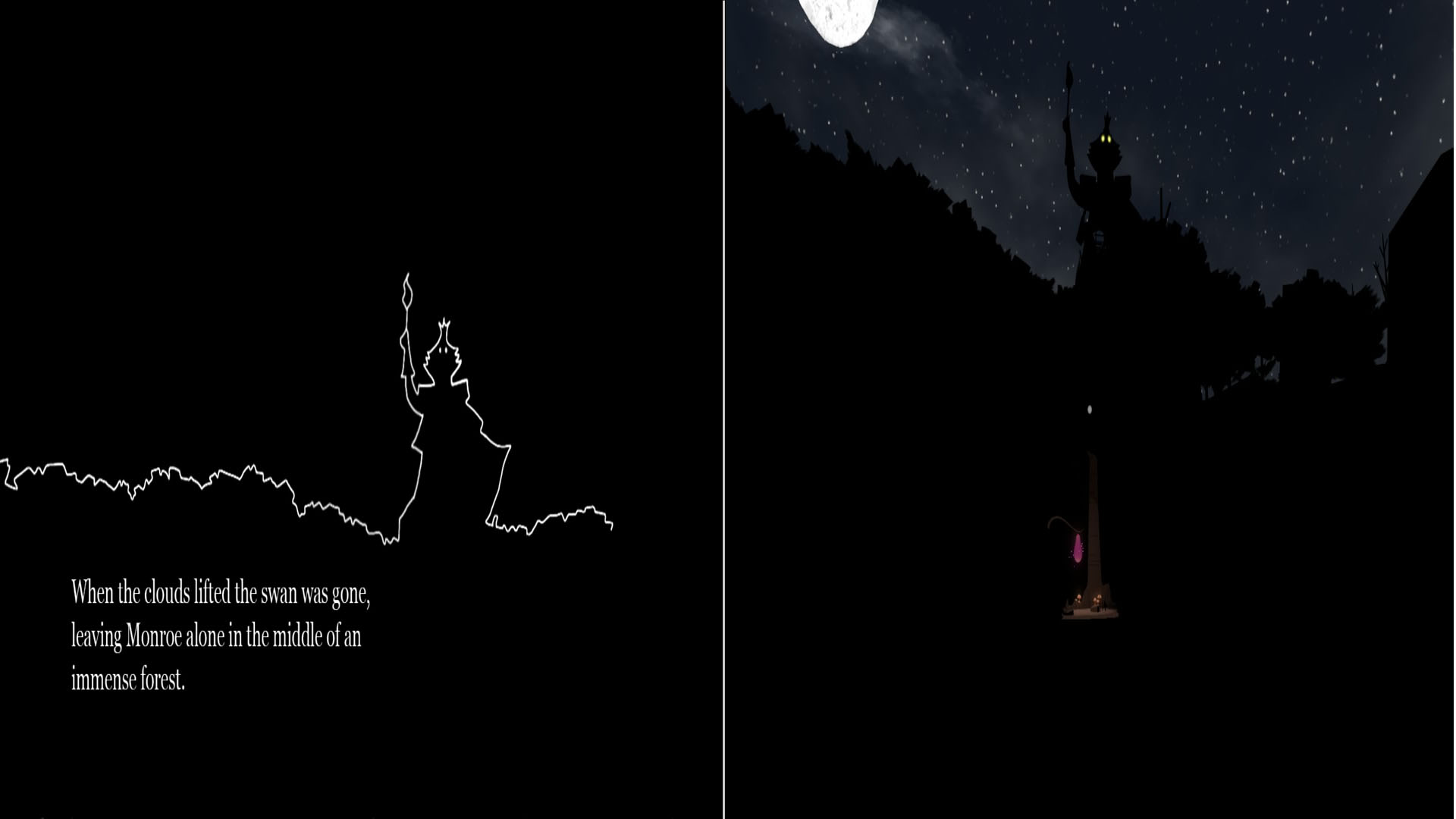
Motivation Lost
During chapter two’s closing cinematic, the swan as a symbol for motivation was made clear. Monroe is chasing after this unfinished swan and feels like he is being led. Consider the idea of wanting. What is it that human beings typically want? Food? Water? Good grades? Money? A job? A family? Then consider those manifestations of desire as end-points. There is often a metaphorical or literal journey to each end, and the journey is rarely devoid of problems. What moves us from a start point - “I would like to obtain a job that pays enough to support a family” - to an end point - “I have obtained said job. Hooray!” - is motivation. Sometimes, motivation is nowhere to be found. Monroe follows the swan (his motivation) into darkness (the age-old symbol for troublesome times) and crashes into a tree. When the clouds lift, the swan is gone. Now Monroe must find his way without a swan intermittently hinting at where to go. Chapter three, Nighttime, commences. After hopping out of a tree, the only two visible objects in the distance are a glowing bulbous fruit and the previously discovered monument of the king. The monument is much larger, which orients the player as to where he has traveled. It’s still far in the distance, though, so the closest inkling of light and warmth is that fruit. En route to the fruit, the player is forced to fall down a dark hole, another possible allusion to Alice’s plight. This is a jolting occurrence to the first-time player; being denied a chance to reach the only lighted space in sight. After landing, navigation becomes literally and metaphorically difficult in this dark world. It is literally troublesome to walk through the pitch-black terrain, much like the hesitancy produced by the shadowless white world in chapter one. The player will often bump into logs, ledges, and other objects on her way to the nearest fruit-light. Metaphorically, it is troubling and sometimes impossible to progress during dark times when motivation is nowhere to be found. The player intuitively moves toward the light, at first for familiarity’s sake, then for safety’s.
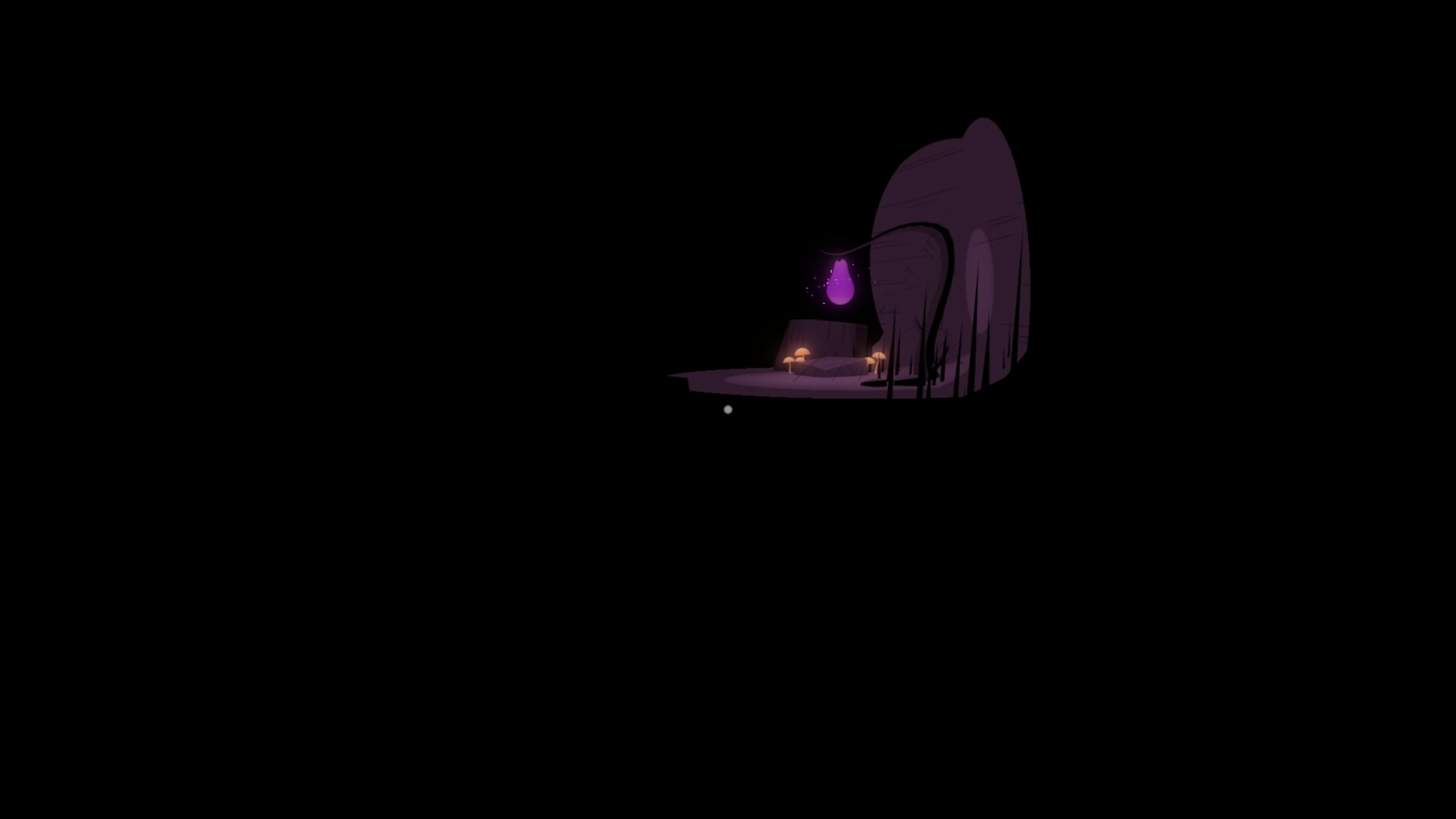
Follow the Light Rabbit
The distance between lighted areas increases from fruit to fruit, which builds suspense. During the lengthier blackouts, the player may be attacked by red-eyed, arachnid-looking creatures. Red slashes rip across the screen accompanied by Monroe’s cries of pain. This is the first time the player can be literally attacked and ‘killed’ (really, the player is just sent back to the nearest checkpoint) if she does not complete a task quickly enough. Coupled with the typical gaming desire to progress, avoiding attack becomes the player’s new motivation. After getting a hang of hopping from light to light, the player is introduced to a new mechanic in the form of a moveable ball of light. The rolling light allows the player to move safety with her. This builds confidence and freedom in the same way that the vines did in the previous chapter. The player now feels like she can move about the gamespace on her own terms, safe from the outside negative forces that inhibit her progression. There is one sequence where the lightball rolls down a hill, requiring the player to chase after it. Safety, in this case, is fleeting, forcing the player to move quickly to keep from being consumed by darkness. At the end of the lightball portion of chapter three, Monroe comes to a house.
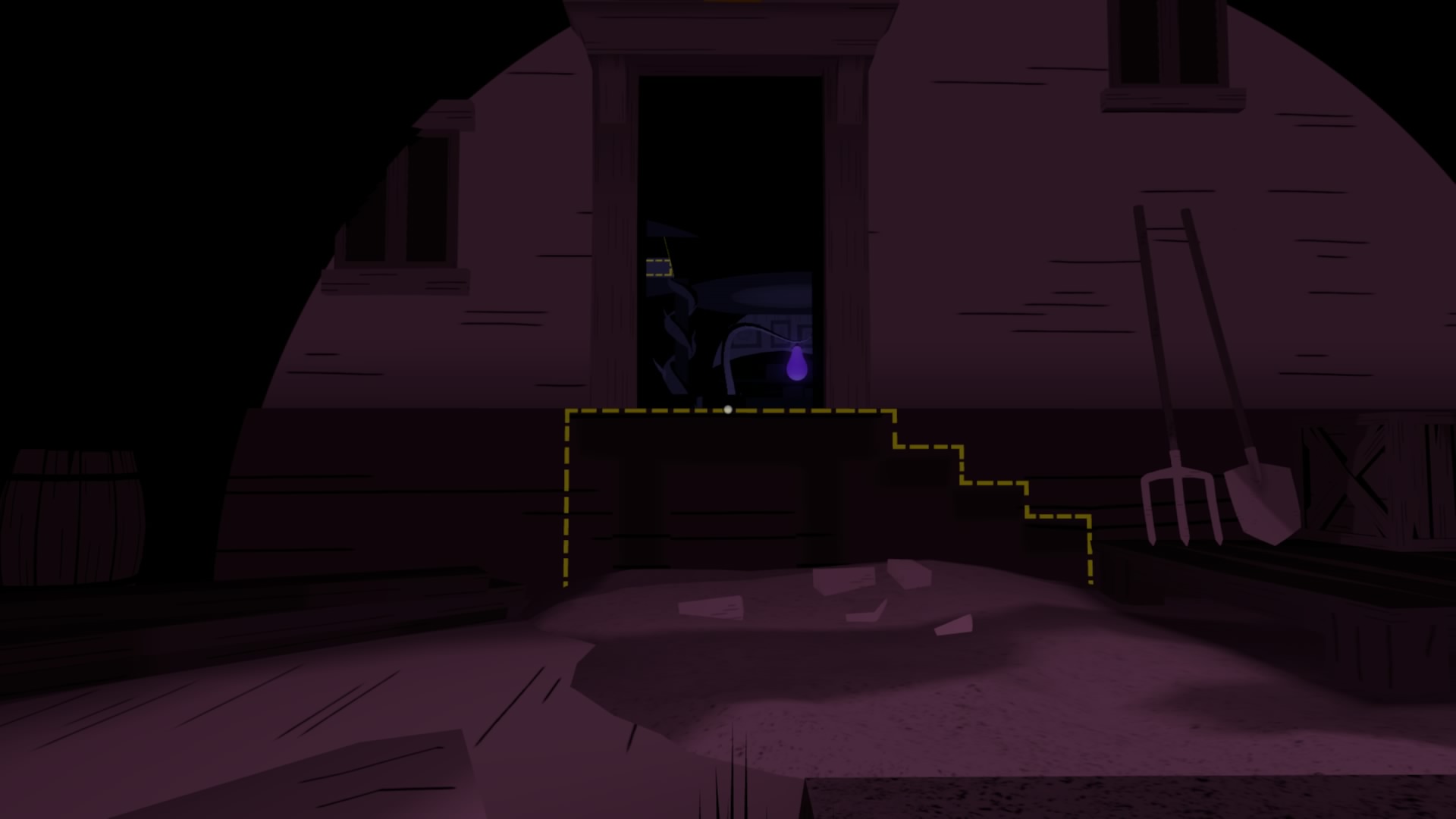
A House is Not a Home
The story page outside of the house clearly states the thematic idea of legacy, claiming that “The King... decided he’d have to leave a legacy the old fashioned way: with a family.” Walking by the house, the player will recognize a yellow dotted line in the shape of a staircase that hints at the radical gameplay shift to come. Poking around in the decrepit, desolate nursery will reveal another narrative development about the creation of the queen. The page itself is an allusion to Michelangelo’s The Creation of Adam. It depicts the tip of a paintbrush touching an outstretched finger. Again the narcissistic tendencies of the king come to light, as it is explained that his wife is so beautiful because she is a female version of himself. This also paints the king as a divine figure, a possible allusion to the Christian God creating man in His own image. Directly after learning of the king’s human creation, the player is invited to jump into a blank canvas (visions of Super Mario 64 come to mind).
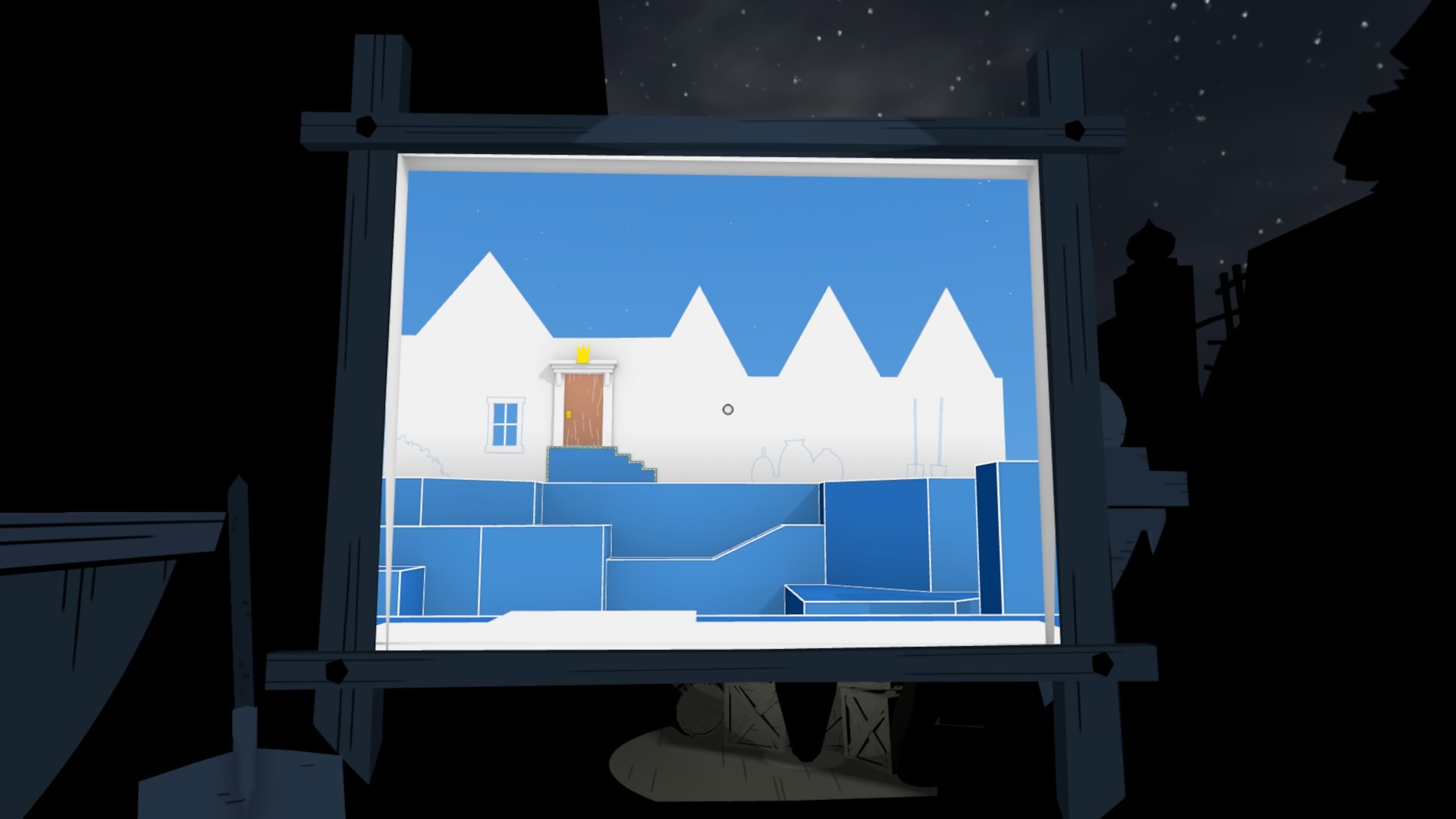
Here We Go!
With a few ball tosses on the blue playfield, the player becomes quickly acquainted with building in The Unfinished Swan. This is possible due in large part to Giant Sparrow’s intuitive design shining once more. Part of what makes this game so enjoyable is how many times the player will feel floored by what he’s doing on screen. The white space at the beginning of the game, the growable and climbable vines in chapter two, and now an all-out building mechanic are spaced out in a way that refreshes the playable experience before it ever stales. I’ve watched several people play this portion and, regardless of familiarity with video games, the player ‘gets it’ in relatively short time; a testament to the quality of TUS’s design. Another interesting gameplay mechanic in this part of the game is how the player’s creations in the building world translate to traversable in-game objects in the main world. The cyclical action of building then progressing then building again could speak to ideas of returning home time after time. Analytically speaking, the connotations of ‘home’ are complex. The fact that Monroe currently resides in an orphanage emphasizes the desire to feel at home. Though some intimate implications pop up a little later on in the song, this is reminiscent of “A House is not a Home,” particularly the line “...a house is not a home when there’s noone there” (Bacharach & David). If home means family, then Monroe might not feel at home for some time. However, his family is the subject of the next few pages of narrative. One story piece tells how of the many presents given to her by the king, the queen only keeps a little silver paintbrush. If your a-ha lightbulb is having trouble brightening, another tidbit of story reveals that the queen becomes pregnant, and another still shows the pregnant queen leaving with a small painting of an unfinished swan. The queen is Monroe’s mother, which means that the negatively portrayed king is Monroe’s father. New meaning is cast over the entire game. Monroe isn’t wandering through a remote surreal story of a king’s rise and fall; he’s strolling through his father’s memories, experiencing them as his own. Monroe was just practicing exactly what his father did his entire life - building. He put together parts of an unfinished house, completing a job that his father started. To go back to the queen’s departure, what she takes with her is literally an unfinished painting. Figuratively speaking, the unfinished work of art is actually inside of her; it is Monroe. Before leaving the nursery section of chapter three, the player is treated to a cheeky allusion to Journey, another game about life’s travails. Looking out into the darkness, one of the only visible features is a set of swan prints. Monroe’s motivation is found once more. Onward!
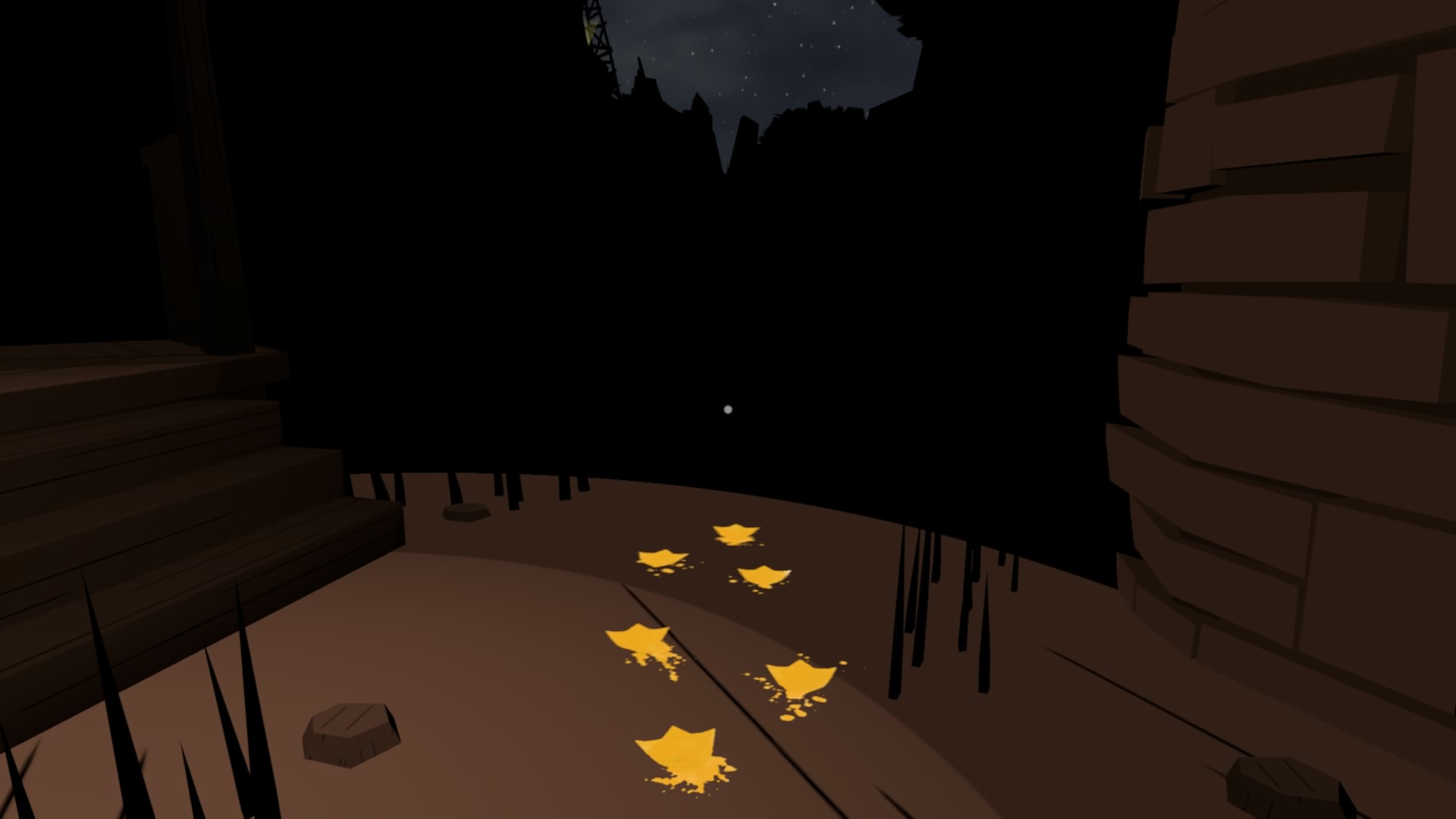
Motivation Found
The player rides in a boat that takes her to the monument’s island. The penultimate page reports that the king mourned for nine years after the queen left, unable to build anything. The final thing he wants to build is a gigantic monument of himself; a last-ditch effort for people to remember him. His powers begin to fail, and it turns out he can’t finish another painting again. He can’t even finish his dream. For ideas of being stuck inside of a dream, see Inception. Also, there are a few ‘dream within a dream’ nods earlier in the game, treating the observational player with confirmation. One such painting in chapter one depicts the King painting a picture of the King painting a picture of the King. In this context, the king is perhaps stuck in the cycle of coming up with an idea then abandoning it for a new one. Or, he could be dying. Failing powers can represent failing health, while the propensity for sleeping rather than waking life can represent denial. ”Living is easy with eyes closed,” so The Beatles have told. The King has locked himself away from the world, a role reversal of the typical tower-bound damsel in distress. It’s up to Monroe to climb up and confront his father. The ascension of the monument is a suspenseful affair. The accompanying music’s cadence increases, the rising water acts as a harrying timer, and the platforming is relatively ramped up in difficulty. All of these elements blend together to make the act of literally climbing up a statue of your father a memorable experience. At the apex of the scaffolding, Monroe swings across a platform and climbs up into an eye hole. As Monroe sees his dad, he can’t figure out what to say, the narrator explains. “Ah, it’s you, the boy from my dream” the king utters.

A Boy Within a Dream
Read more about:
BlogsYou May Also Like